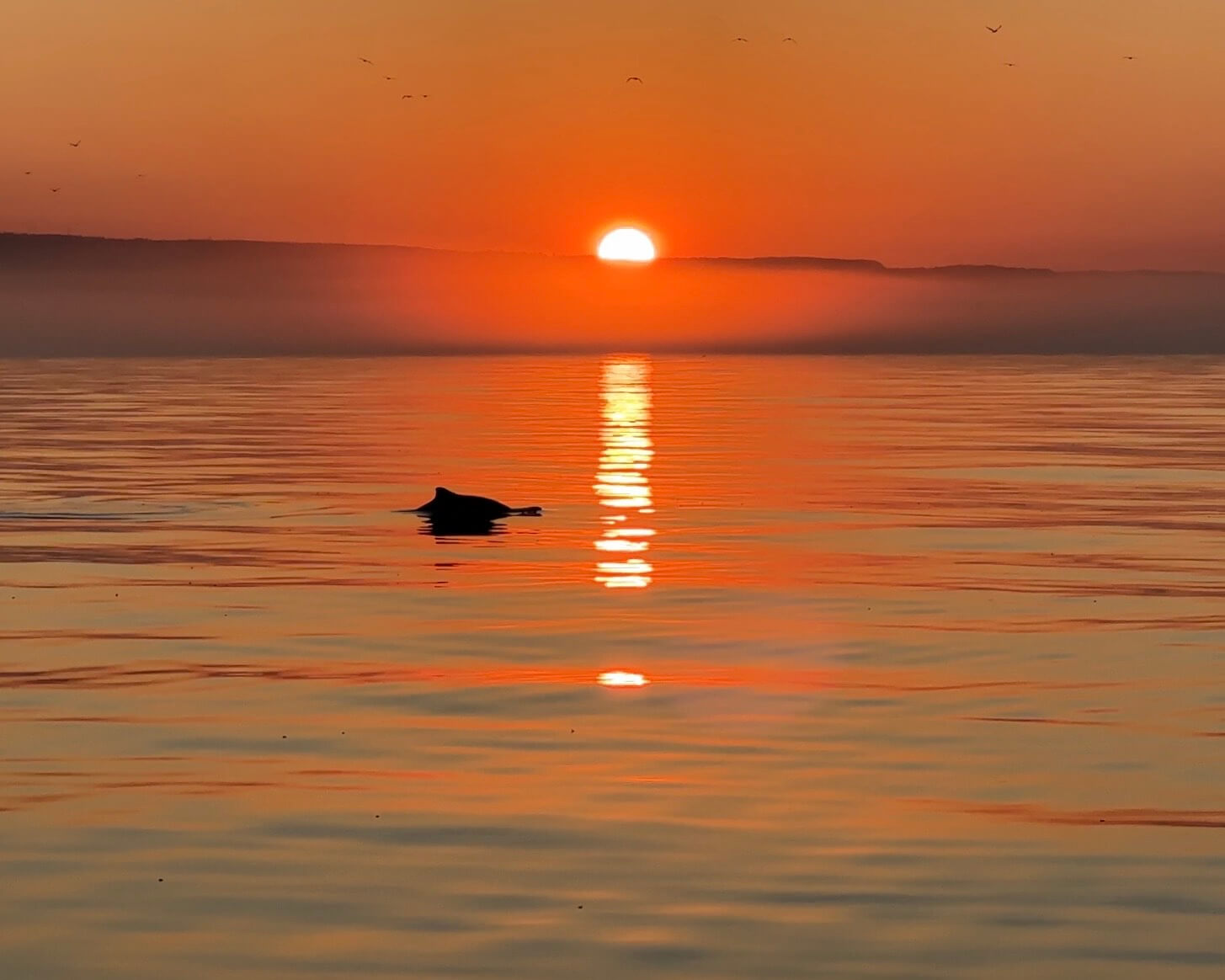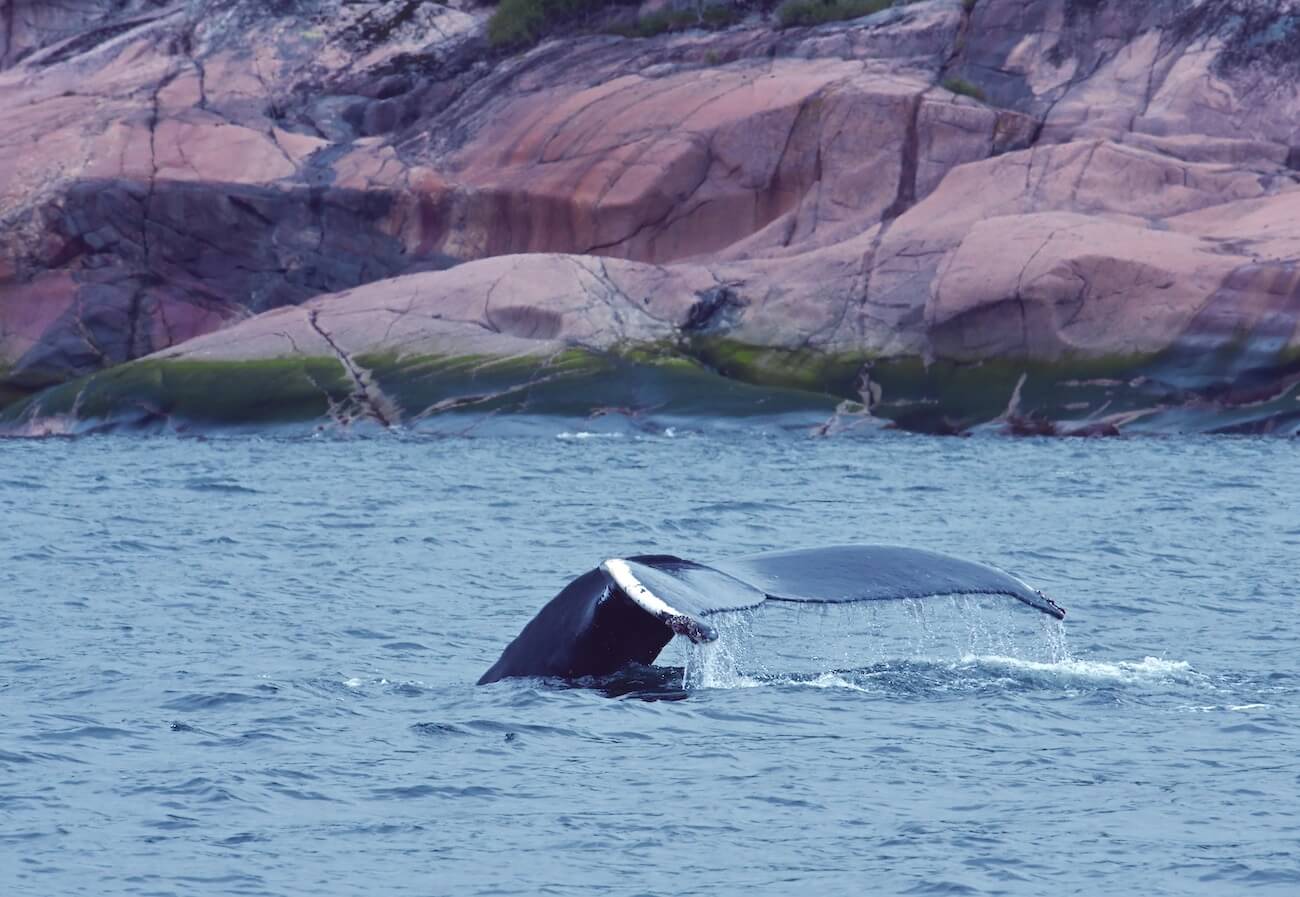These are the last trips out to sea for tour operators of Gaspé Bay, and the whales are plentiful! On October 11, off the cliffs of Cap-Bon-Ami and Cap Gaspé, there are five humpbacks: H692, Barbillon, Fleuret and her calf as well as Tic Tac Toe. The day before, the team was unable to leave the dock due to strong winds from the northwest. Nevertheless, on the way, one of the collaborators stops because he has just spotted a minke whale performing a spectacular breach. “He’s shown this behaviour at least a dozen times!” he exclaims. These impressive breaches are believed to be associated with various social activities in these animals and are most frequently observed in adverse weather conditions. They might be a means of reinforcing communication or facilitating breathing when the sea is raging!
In the Estuary between Les Escoumins and Tadoussac, observers who have taken to the sea despite the bitter cold enjoy remarkable encounters with gray seals as well as surface feeding minke and fin whales. The giants’ ventral grooves are stretched out and their gaping mouths reveal the characteristics and colour of their baleen. Precisely, the fin whale has one unique physical attribute: the colours of its head are asymmetrical. The lower jaw, chevron, tongue and the baleen are light of the right side and dark on the left.
Thanksgiving weekend is synonymous with the end of the season for Parks Canada’s land-based observation sites adjacent to the Saguenay–St. Lawrence Marine Park. At the Pointe-Noire site in Baie-Sainte-Catherine, herds of adult and young belugas can be observed roaming the mouth of the Saguenay Fjord for much of the day. At Cap de Bon-Désir in Les Bergeronnes, minke whales feed energetically, lifting their bodies out of the water and revealing the skin of their throat and belly red from exertion. At the Marine Environment Discovery Centre in Les Escoumins, fifteen or so harbour porpoises attract the attention of observers. There seem to be several mother-newborn pairs and some individuals are even remaining completely motionless at the surface for minutes on end. “Is that one nursing?” wonders the naturalist on duty. Perhaps. Harbour porpoises mate between July and August. Gestation lasts about 10 months and calving therefore occurs each year in the spring and early summer. Nursing lasts between 8 and 12 months.
Porpoises or dolphins? Certain characteristics distinguish these two large cetacean families: porpoises have a blunt snout and triangular dorsal fin, while dolphins have an elongated rostrum, a sickle-shaped dorsal fin and are larger in size. Their teeth are also different: those of dolphins are sharp while in porpoises they are spatula-shaped. On the morning of October 9, off the shores of Sainte-Felicite, near Matane, an observer notes that he is witness to more than one hundred white-sided dolphins.





